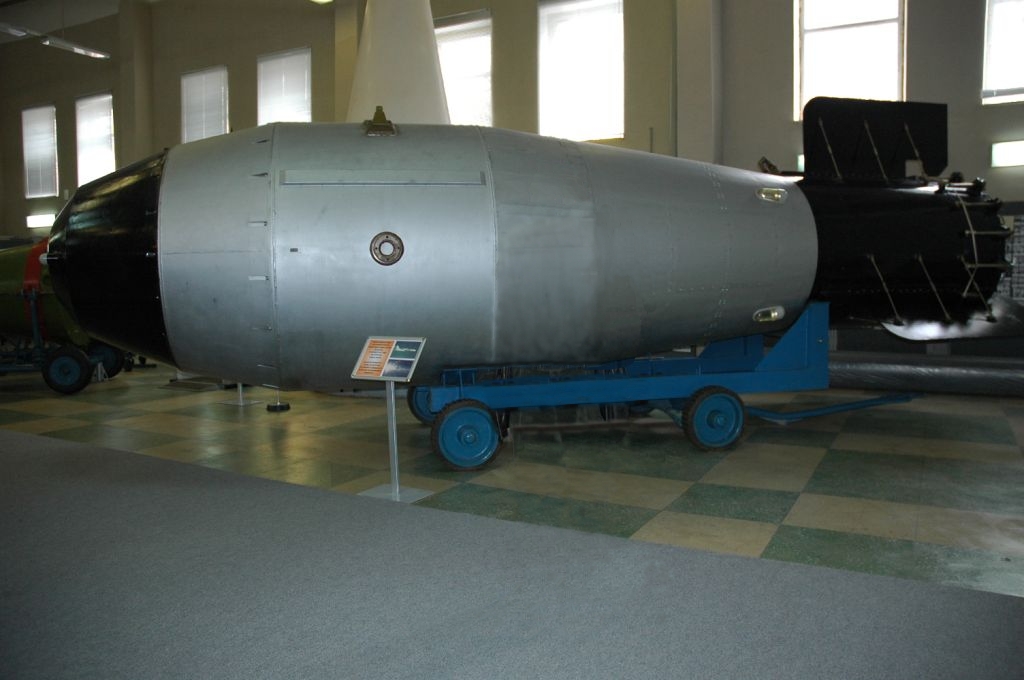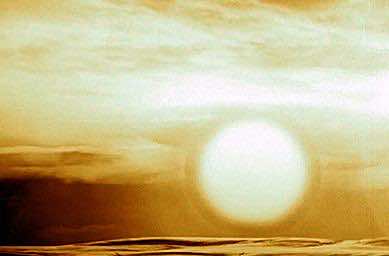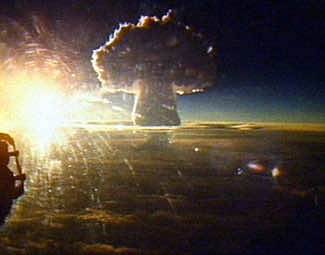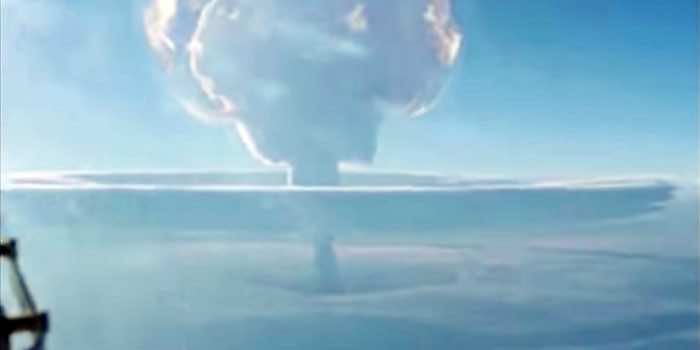The AN602, also known as the Tsar Bomba, (code name Ivan or Vanya, as well as (erroneously) RDS-202 and RN202), was a hydrogen aerial bomb and is the most powerful nuclear weapon ever created and tested. On 30 October 1961, the largest bomb ever constructed was set off over Novaya Zemlya Island in the Russian Arctic Sea. The Soviet ‘Tsar Bomba’ had a yield of 50 megatons, or the power of around 3,800 Hiroshima bombs detonated simultaneously.
Tsar Bomba was also referred to as “Kuzkina mat” or “Kuzma’s mother.” This nickname may refer to Nikita Khrushchev’s promise made at a 1960 session of the United Nations General Assembly to show the United States a “Kuzkina mat,” which also roughly translates to “We’ll show you!” There were many other nicknames associated with Tsar Bomba such as Big Ivan, Project 7000, and Product Code 202 (Izdeliye 202). The Central Intelligence Agency designated the Tsar Bomba nuclear test as “JOE 111.”

A Tu-95V bomber was modified to carry the weapon, which was equipped with a special parachute that would slow its fall, allowing the plane to fly a safe distance from the blast. The aircraft, piloted by Andrey Durnovtsev, took off from Kola Peninsula on October 30, 1961. It was joined by an observer plane. At approximately 11:32 AM Moscow time, Tsar Bomba was dropped over the Mityushikha Bay test site on the deserted island of Novaya Zemlya. It exploded about 2.5 miles (4 km) above the ground, producing a mushroom cloud more than 37 miles (60 km) high; the flash of the detonation was seen some 620 miles (1,000 km) away. The resulting damage was equally massive. Severny, an uninhabited village 34 miles (55 km) from ground zero, was leveled, and buildings more than 100 miles (160 km) away were reportedly damaged. In addition, it was estimated that heat from the blast would have caused third-degree burns up to 62 miles (100 km) distant.
The bomb was built in 1961 by a group of Soviet physicists that notably included Andrey Sakharov. At the time the Cold War between the U.S.S.R. and the United States had grown increasingly tense. Meant to be a show of Soviet strength, the three-stage bomb was unparalleled in power. It had a 100-megaton capacity, though the resulting fallout from such a blast was considered too dangerous for a test situation. Thus, it was modified to yield 50 megatons. In addition, the fusion process of the Soviet device was altered, dramatically lessening the fallout. The resulting weapon weighed 27 tons, with a length of some 26 feet (8 metres) and a diameter of about 7 feet (2 metres).

Its immense yield, large weight and bulky dimensions made the Tsar Bomba impractical for use as a military weapon. In particular, it could not be delivered via ballistic missile. The Tsar Bomba was therefore never deployed and remained a one-time display of superiority.



